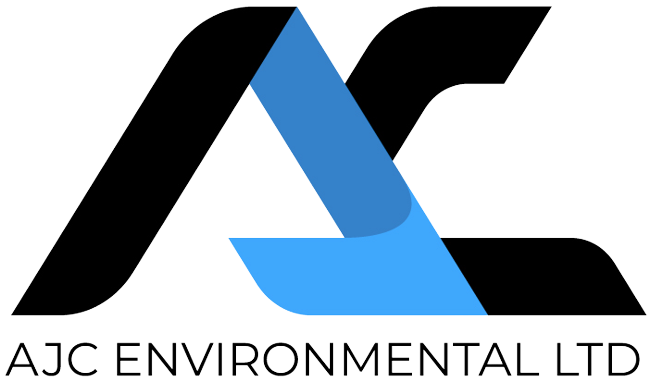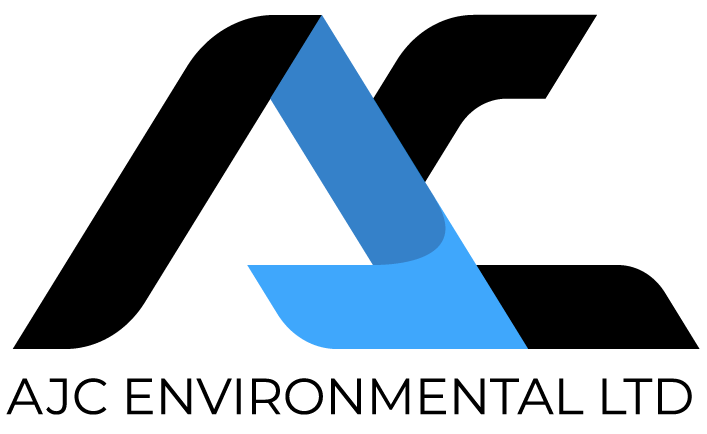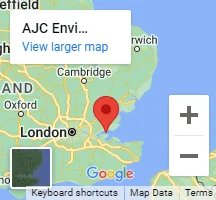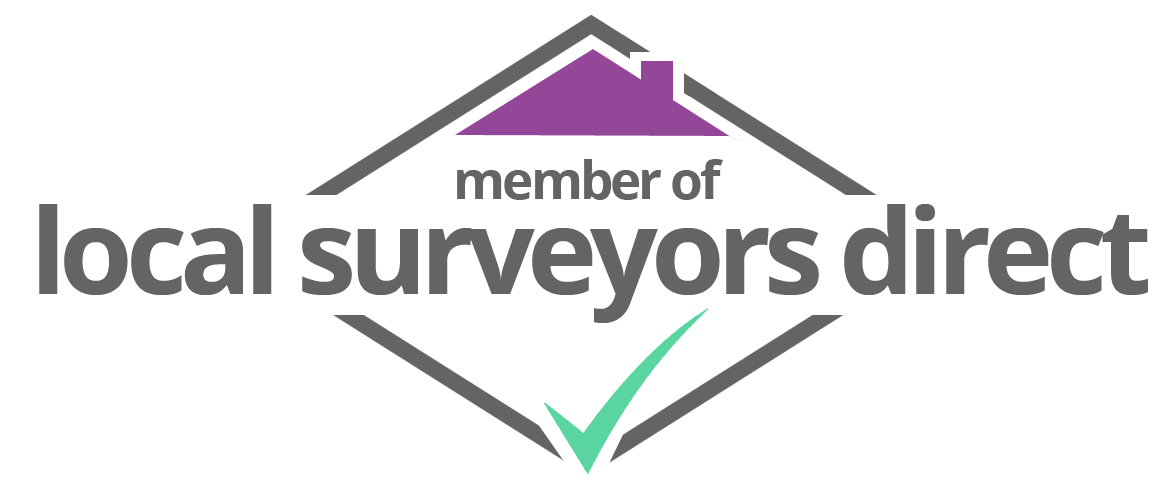Asbestos surveys play a role in maintaining safety and meeting regulatory standards for buildings with asbestos. There are two types of surveys carried out depending on the planned use of the building; the Asbestos Management Survey and the Asbestos Refurbishment and Demolition Survey. It is crucial for property owners and managers in regions like London, Essex and Kent, where AJC Environmental is active, to grasp the differences between these surveys.
Asbestos Management Survey
An Asbestos Management Survey is designed to manage asbestos-containing materials (ACMs) during the normal occupation and use of a building. The primary objectives are:
- Identifying the location, quantity, and condition of ACMs.
- Assessing the risk posed by these materials during everyday activities.
- Monitoring the state of ACMs and recommending actions if their condition deteriorates.
What Happens in an Asbestos Management Survey?
An Asbestos Management Survey is a crucial step in identifying and managing asbestos-containing materials (ACMs) in buildings to ensure safety during normal occupancy and routine maintenance. Here’s an overview of what this process involves:
1. Preparation and Planning
- Site Information Review: The surveyor begins by reviewing any existing documentation about the building, including previous surveys, architectural plans, and records of maintenance or renovations
- Health and Safety Measures: Safety protocols are established to protect both the surveyors and the building occupants during the survey.
2. Visual Inspection
- Building Walkthrough: The surveyor conducts a thorough walkthrough of the building to visually inspect areas where asbestos might be present. This includes accessible areas like ceilings, walls, floors, and other structures.
- Identifying Suspect Materials: Materials that are likely to contain asbestos, such as insulation, floor tiles, and roofing materials, are noted. The surveyor documents these materials and their locations.
3. Sampling
- Non-Intrusive Sampling: Small samples of suspect materials are collected for laboratory analysis. The sampling is minimally invasive to avoid disturbing the building occupants and causing unnecessary exposure.
- Laboratory Analysis: The collected samples are sent to an accredited laboratory to confirm the presence and type of asbestos.
4. Risk Assessment
- Material Condition Evaluation: The surveyor assesses the condition of the identified ACMs to determine if they are damaged or likely to release asbestos fibres. This includes checking for signs of wear, deterioration, or disturbance.
- Exposure Risk Assessment: The potential risk of exposure to asbestos fibres is evaluated based on the material’s condition and location.
5. Report Preparation
- Survey Report Compilation: A detailed report is prepared, including the locations, types, and conditions of the ACMs, as well as photographs and diagrams to aid in identification.
- Asbestos Register: The report includes an asbestos register that lists all identified ACMs, their conditions, and locations. This is essential for on-going management and monitoring.
6. Recommendations and Management Plan
- Management Recommendations: The surveyor provides recommendations on how to manage the identified asbestos safely. This could involve regular monitoring, encapsulation, or removal if the ACMs are in poor condition.
- Asbestos Management Plan: An asbestos management plan is developed to outline the procedures for maintaining ACMs in a safe condition, including schedules for re-inspections and actions to take if materials deteriorate.
7. Follow-Up Actions
- Regular Re-Inspections: The condition of ACMs is re-inspected periodically (usually annually) to ensure they remain safe and undisturbed. Any changes in condition are documented, and the management plan is updated accordingly.
Asbestos Demolition Survey
In contrast, an Asbestos Demolition Survey, also known as a Refurbishment and Demolition (R&D) Survey is required before any significant building work, such as refurbishment or demolition, is undertaken. This survey is more invasive and comprehensive, aiming to:
- Identify all ACMs that might be disturbed during the work.
- Ensure the safety of workers by providing detailed information on the location and condition of asbestos materials.
- Prevent asbestos exposure during construction activities.
What Happens in an Asbestos Demolition Survey?
An Asbestos Demolition Survey, also called a Refurbishment and Demolition (R&D) Survey, is critical for identifying all asbestos-containing materials (ACMs) that might be disturbed during major construction, refurbishment, or demolition projects. This ensures the safety of workers and compliance with legal requirements. Here is a detailed outline of the process:
1. Preparation and Planning
- Review of Project Scope: The surveyor reviews the detailed plans for the demolition or refurbishment project to understand the full extent of the work. This includes identifying which areas of the building will be affected.
- Health and Safety Protocols: Comprehensive safety measures are established to protect surveyors and workers. This might include vacating the premises during the survey to avoid exposure to asbestos fibres.
2. Detailed Inspection
- Full Access Requirement: The surveyor gains access to all areas of the building, including hard-to-reach places such as behind walls, above ceilings, and in service voids. This ensures no hidden ACMs are overlooked.
- Intrusive Inspection: The inspection is fully intrusive and involves destructive methods to uncover ACMs that might be concealed within the building structure. This can include drilling, cutting, and breaking through walls and other materials.
3. Extensive Sampling
- Collection of Samples: The surveyor collects multiple samples from suspected ACMs throughout the building. This may involve taking samples from materials like insulation, tiles, pipes, and cement products.
- Laboratory Analysis: All collected samples are sent to an accredited laboratory for analysis to confirm the presence and type of asbestos. The results help in mapping out all ACMs within the building.
4. Documentation and Reporting
- Comprehensive Survey Report: A detailed report is prepared, documenting the locations, types, and conditions of all identified ACMs. The report includes photographs, diagrams, and detailed descriptions of the sampling and findings.
- Asbestos Register: An asbestos register is created or updated to include all identified ACMs. This register is crucial for planning safe demolition or refurbishment activities.
5. Risk Assessment and Recommendations
- Evaluation of Risks: The condition and potential risks of identified ACMs are assessed. This includes determining the likelihood of asbestos fibre release during the planned work.
- Safety Recommendations: The surveyor provides detailed recommendations on managing and removing the ACMs safely. This often involves specific procedures for safe handling and disposal of asbestos materials during demolition or refurbishment.
6. Implementation of Control Measures
- Asbestos Removal Plan: Based on the survey report, a plan is developed to safely remove and dispose of the ACMs. This plan must comply with all relevant regulations and guidelines to ensure safety and legal compliance.
- Worker Safety: Measures are put in place to protect workers from asbestos exposure during the removal process. This includes providing personal protective equipment (PPE) and ensuring all work is carried out by trained and certified professionals.
7. Follow-Up and Clearance
- Final Clearance Inspection: After the removal of ACMs, a final clearance inspection is conducted to ensure no asbestos remains. Air quality tests might also be performed to confirm that asbestos fibres are no longer present in the environment.
- Documentation of Work Completed: Detailed records of all work carried out, including the removal and disposal of asbestos, are maintained. This documentation is essential for future reference and legal compliance.
Key Differences Between Asbestos Management and Demolition Surveys
- Scope and Intrusiveness: Management surveys are less intrusive, focusing on visual inspections and minimal sampling. Demolition surveys are fully intrusive, involving significant disturbance of building materials to uncover hidden ACMs.
- Purpose: Management surveys are intended for the on-going use of the building, ensuring ACMs are safely managed. Demolition surveys are specifically for identifying asbestos risks before major construction work.
- Regulatory Compliance: Both surveys are mandated by the Control of Asbestos Regulations 2012, but they serve different compliance needs—on-going management versus pre-construction safety.
Choosing the right survey depends on the specific needs of the building and the planned activities. For expert guidance and professional asbestos surveys in London, Essex, and Kent, AJC Environmental offers certified services ensuring safety and compliance.
Further Reading on Asbestos Surveys
- HSE – Asbestos: The Survey Guide (HSG264)
- This guide provides comprehensive information on different types of asbestos surveys and their requirements. Asbestos: The survey guide (HSG264)
- UKAS – Asbestos Survey Accreditation
- Information about the UK accreditation for asbestos surveys, ensuring quality and compliance. Asbestos Survey Accreditation
These resources provide a wealth of information on asbestos surveys, ensuring you have the necessary knowledge to manage and mitigate asbestos risks effectively.





